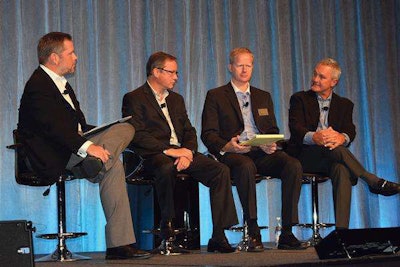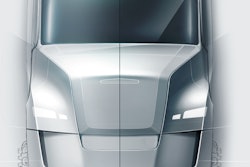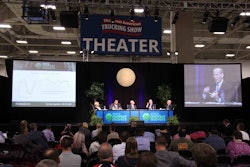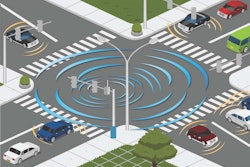 Connectivity like that found in modern telematics systems will be one of the key drivers in major trucking industry innovations tomorrow that rely on vehicle connectivity.
Connectivity like that found in modern telematics systems will be one of the key drivers in major trucking industry innovations tomorrow that rely on vehicle connectivity.Tomorrow’s trucks will be equipped for wireless remote updating of spec’s for specific operating conditions, such as crossing mountains, speakers said at a trucking conference Aug. 27.
Further developments in that area, known as “parameterization,” as well as remote diagnostics and autonomous trucks, will come incrementally, building upon existing technologies, said speakers at the Commercial Vehicle Outlook conference in Dallas.
Parameterization’s ability to reset horsepower, speed governing and other engine specs for special circumstances “is going to be the next big opportunity,” said Chris Hines, executive vice president of Zonar. “If I’m a fleet and I’ve got a light-weight load and it’s going over the Rocky Mountains, I should be able to set a truck for the location.”
The fleet will have to manage whether a driver has the ability to make such adjustments, or whether that would be limited to someone at the home office. Drivers would like that flexibility in certain situations, for example: “If you need more horsepower, you can get more horsepower for that load.”
 Panelists from left: CCJ Editor Jeff Crissey, Meritor Wabco’s Steve Hampson, CCJ’s Aaron Huff and Zonar’s Chris Hines.
Panelists from left: CCJ Editor Jeff Crissey, Meritor Wabco’s Steve Hampson, CCJ’s Aaron Huff and Zonar’s Chris Hines.For remote updates of firmware for safety-related systems, which could have more critical results, “We have to be a lot more careful,” said Stephen Hampson, president and general manager of Meritor Wabco Vehicle Control Systems. “I see that being a little bit further out.”
The payback for some fleets regarding safety improvements is eight or nine months, he said.
“That’s why they’re spec’ing more of the systems,” Hampson said.
As for fuel efficiency improvements, “You see a lot of interest in platooning right now because the payback is pretty obvious,” he said. Platooning also raises the question of whether hours of service regulations should be changed to treat a driver’s on-duty time differently if he’s in a platoon and getting a form of rest.
Hampson said safety system communications for trucks and other vehicles are falling into three categories: vehicle to vehicle; vehicle to the infrastructure; and the vehicle receiving information from what is around its immediate vicinity, such as other vehicles and pedestrians. While the major focus for gathering data for warnings and the triggering of safety systems is on what’s in front of the truck, other systems now also deal with what’s beside the truck and what’s behind it. Increasing use of video has furthered these advances.
Driver tablets are proliferating, and Zonar has come out with an Android-based tablet that “is the driver interface for all his applications,” Hines said. “You can take this out of the truck and use it for additional work flow items,” such as an RFID reader to check designated components on the truck. It offers Internet connectivity, entertainment functions, a camera to document freight and accidents, and the ability to run third-party applications.
Before long, drivers “are going to have their own tablets much like everybody has their own phones,” he said.
Hines and Hampson stressed how technological evolution, including the advent of automated assisting driving and the expectation of fully autonomous driving, is creating an even greater demand for qualified technicians. However, the developments also have potential to appeal to new drivers.
“The younger generation will embrace the technology easier,” Hampson said, but experienced drivers also have a key role. Fleets often use seasoned drivers first to test new technologies, then use them to train the trainers.












